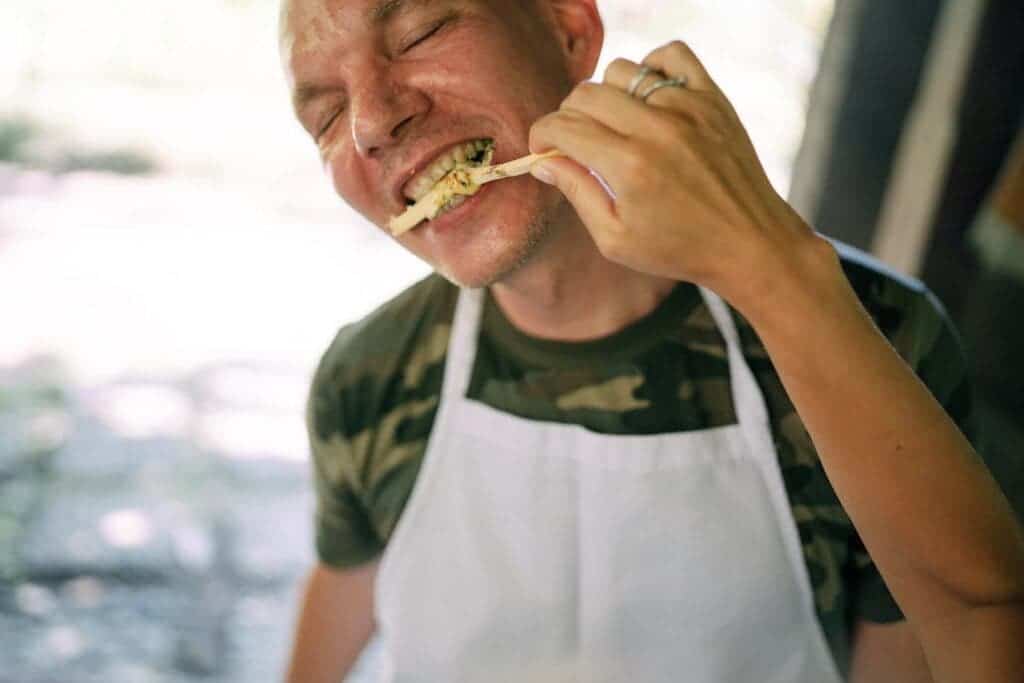
If you’re like most people, you’re probably more concerned with the number of calories in your lunch rather than the calories burned during eating. About 10% of the calories consumed over the course of the day are expended on digesting, absorbing, metabolizing, and eliminating that food. According to a new study, you can add another 1% to that — the energy we burn in the act of chewing food. That might not seem like a lot, but it’s more than previously expected, and scientists now think mastication likely played a major role in shaping the kind of faces humans have today.
This face is made for chewing
How human faces reached their current configuration has been a matter of debate for some time. Prime factors in the changing structure of the face include a growing brain and adaptations in the jaw and teeth in response to shifts in diet and feeding behavior, but also social influences that shaped our ancestors’ faces to provide better gesture and nonverbal communication.
Around 4 million years ago, our earliest ancestors, such as Ardipithecus and Australopithecus, ate tough plant foods, such as seeds, nuts, tubers, and fibrous leaves that would have large jaw muscles and cheek teeth to break down. As such their faces were broad and deep to accommodate massive muscle attachment areas. But starting with the apparition of the genus Homo, early humans started to routinely use tools to cut meat and cook food as the climate in Africa became drier and the habitat less wooded.
Cooking and chopping tools transferred a lot of this load away from our face muscles, so the human face became more delicate, with a flatter countenance compared to earlier ancestors. This sounds like common sense, considering what we know about evolutionary pressure and natural selection, but researchers at the University of Manchester and the University of Leiden wanted to quantify the daily energy expended on chewing, so it’s clearer if mastication played a role in driving these facial evolutionary changes.

Researchers led by anthropologist Adam van Casteren recruited 15 women and 6 men aged between 18 and 48 who had to chew on soft and stiff gum, while a weird-looking bubble-like hood was placed over their heads. The airtight hood has two tubes that let air in and out, and contains sensors that measure the amount of oxygen inhaled and carbon dioxide exhaled. It’s a weird system but it works.
During chewing, CO2 levels rose clearly indicating that more energy was consumed than at rest. The gum is odorless, tasteless, and contains zero calories so any energy expenditure owed to digestion can be ruled out.
The volunteers consumed 10.2% more energy chewing soft gum and 15.1% more on hard gum compared to the basal metabolic rate. That was surprising since at the start of the study the researchers were skeptical that the energy spent on chewing could be enough to even be measurable in the lab.
“What we discovered was that chewing food takes a lot of energy. And more importantly: the harder the food, the more energy it takes,” the authors concluded in the journal Science Advances.
Although energy consumed on chewing is significant, early humans must have burned even more calories in our lineage’s distant evolutionary past. According to one estimate, humans only spend 7 minutes a day chewing food, whereas mountain gorillas can spend up to 90% of their waking time masticating food. If early human ancestors were more like gorillas than us, they also must have spent copious amounts of energy on chewing. From this standpoint, modern humans are incredibly efficient at squeezing every calorie out of the food we eat to transform that energy into more useful work.
“We assume that natural selection produced jaws, facial muscles, and teeth that make the chewing system as efficient as possible, thus minimizing the energy spent chewing food,” says paleoanthropologist Amanda Henry from Leiden University. “We, therefore, think that how we humans chew today has been optimized by evolution.”
But biomechanics is just one factor out of a combination of many that shaped our faces across the ages. For instance, Homo erectus and the Neanderthals also used tools to prepare food and make it easier to chew, but they had large, protruding brow ridges, similar to African great apes. Some researchers believe the strong brow ridges help to communicate dominance and aggression. Along with large, sharp canine teeth, humans lost large brow ridges, perhaps because we evolved to be less aggressive and more cooperative.









